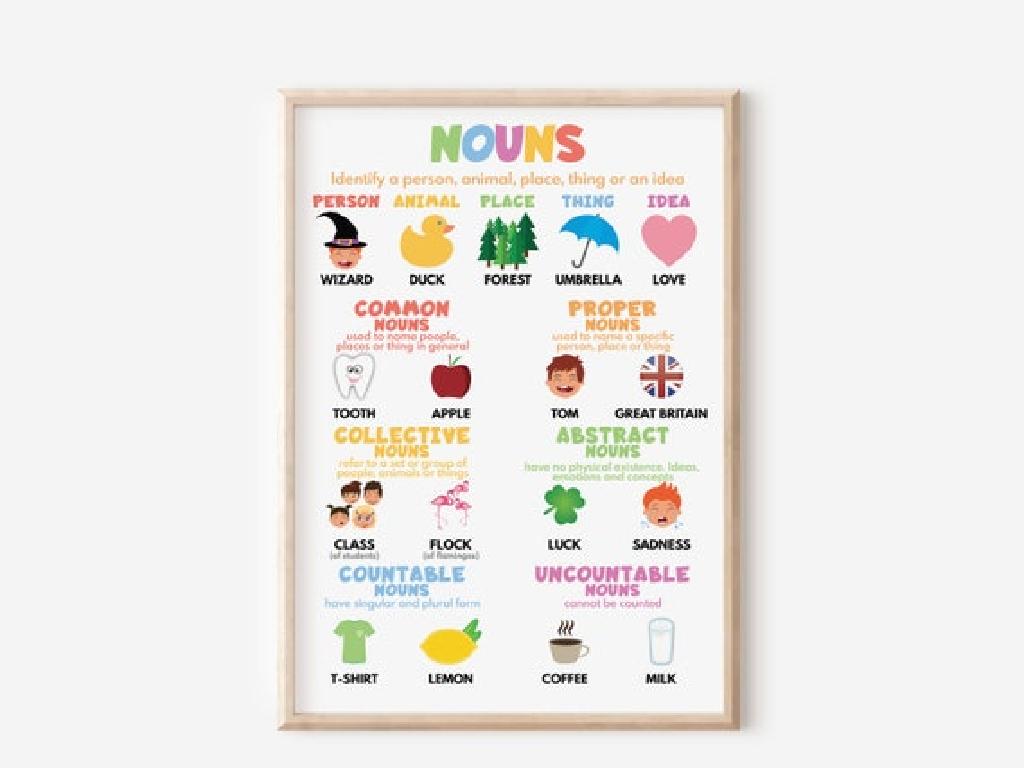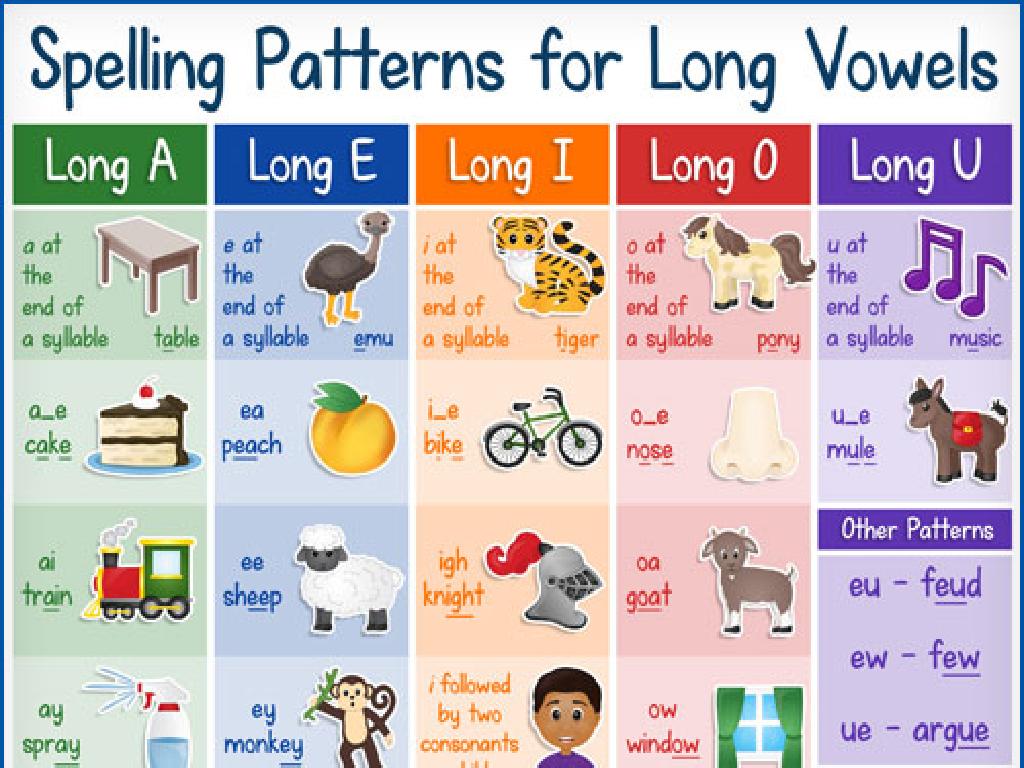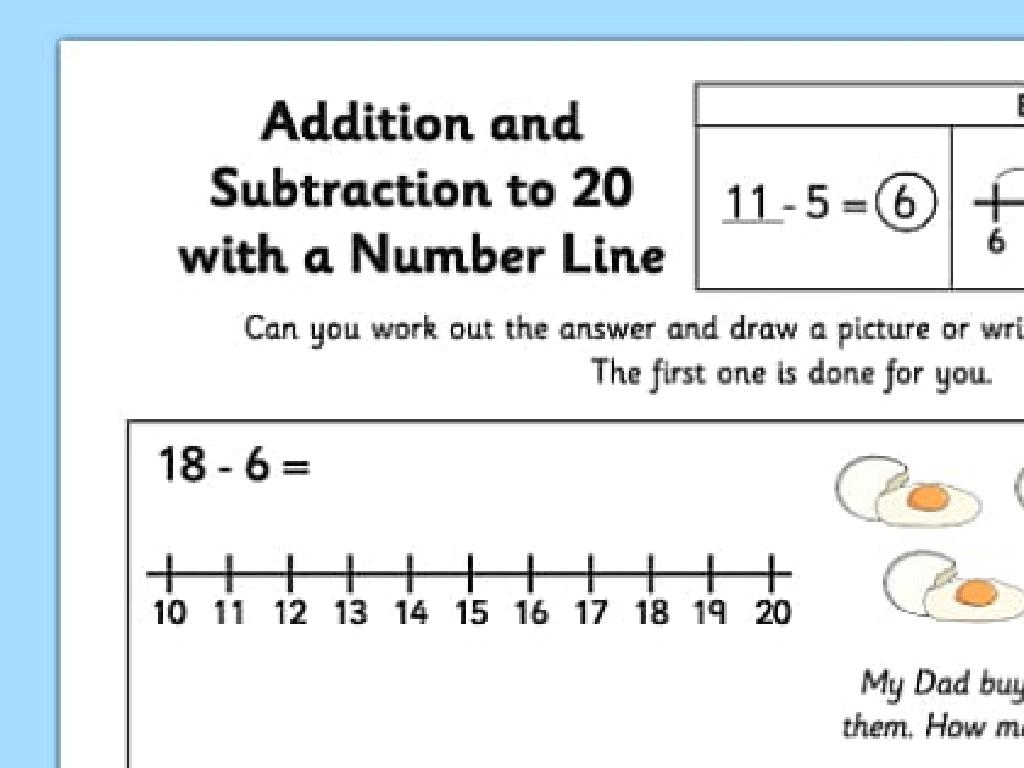Read About Science And Nature
Subject: Language arts
Grade: Fourth grade
Topic: Informational Texts: Level 2
Please LOG IN to download the presentation. Access is available to registered users only.
View More Content
Exploring Science & Nature Through Reading
– What are Informational Texts?
– Texts that explain real-world facts and concepts
– Today’s focus: Science and Nature
– Discover plants, animals, weather, and more
– The value of reading about our world
– Understand ecosystems and how things work together
– Encouraging curiosity and learning
– Builds knowledge and inspires questions about the environment
|
This slide introduces students to the concept of informational texts with a focus on science and nature. Informational texts are non-fiction and provide facts about the real world, which is essential for students to understand the environment around them. Today’s reading adventure will help them explore various aspects of science and nature, such as plant life cycles, animal habitats, weather patterns, and more. Emphasize the importance of reading to gain knowledge and encourage students to ask questions about the natural world. This will not only enhance their comprehension skills but also foster a sense of wonder and responsibility towards the environment.
Exploring Informational Texts
– What are Informational Texts?
– Texts that provide facts about real-world topics
– Types of Informational Texts
– Examples: Articles, Encyclopedias, Manuals
– Informational vs. Fiction Texts
– Fiction tells a story, Informational texts teach us about reality
– Understanding their purpose
|
Informational texts are a key component of learning, especially in subjects like science and nature. They are designed to inform and educate the reader about factual topics. This slide introduces students to the concept of informational texts, highlighting the difference between these and fictional stories. Students should understand that while fiction is narrative and often imaginative, informational texts are based on facts and real events. Encourage students to think about the purpose of reading these texts: to gain knowledge and understand the world around them. Provide examples of informational texts they might encounter, such as articles about animals or manuals on how to grow plants. Discuss how the structure and language of informational texts help convey factual information effectively.
Exploring Informational Text Features
– Navigate Table of Contents
– It’s like a map of the book, showing where to find topics.
– Recognize Headings & Subheadings
– They organize the text into sections, like chapter titles.
– Understand Captions & Diagrams
– Captions explain pictures; diagrams show parts of things.
– Use Index & Glossary
– Index helps find info quickly; glossary defines words.
|
This slide introduces students to the key features of informational texts that help readers understand and locate information. The Table of Contents acts as a guide to the book’s structure, while headings and subheadings organize the content into digestible sections. Captions and diagrams provide visual explanations and enhance comprehension. The index is a tool for quick reference, and the glossary helps with vocabulary. Encourage students to use these features when they read about science and nature to improve their understanding of the material. Have them practice by looking up a topic in the index and then finding the related terms in the glossary.
Exploring Science through Reading
– Reading broadens world knowledge
– Dive into plants, animals, weather, space
– Explore how plants grow, animal habitats, weather patterns, and the solar system
– Discover new facts and concepts
– Use books to learn about photosynthesis, species, climate, and planets
– Enhance understanding of nature
|
This slide aims to inspire students to explore the vast world of science through reading. By engaging with informational texts, students can travel beyond their immediate surroundings and learn about diverse topics such as the life cycle of plants, animal behaviors and habitats, the dynamics of weather systems, and the mysteries of outer space. Encourage them to think of reading as an adventure that allows them to uncover new facts and understand complex concepts. This will not only enrich their knowledge but also stimulate their curiosity about the natural world. Provide examples of books or articles that can serve as a starting point for their exploration and remind them that every page holds the potential to reveal something exciting and new about our universe.
Discovering Nature through Texts
– Explore ecosystems and conservation
– Ecosystems are communities of living things. Conservation helps protect them.
– Learn why nature matters
– Nature provides resources and balance in our world.
– Discover different habitats
– Habitats are homes for animals and plants, like forests, oceans, and deserts.
– Understand our environment
– Knowing about the air, water, and land around us helps us care for our planet.
|
This slide aims to spark curiosity in students about the natural world through informational texts. Introduce ecosystems and conservation, explaining how all living things are interconnected and why we need to protect these environments. Emphasize the importance of nature in providing essential resources and maintaining ecological balance. Discuss various habitats and the unique life they support. Finally, encourage students to think about their own surroundings and the role they play in preserving the environment. Activities can include reading articles on these topics, watching educational videos, and discussing how they can contribute to conservation efforts.
Exploring Vocabulary in Science and Nature
– Identify key science terms
– Find important words in science texts
– Use context for new words
– Clues in sentences help guess meanings
– Create a vocabulary list
– List new words and their meanings
– Understand words through reading
– Reading helps us learn and remember words
|
This slide aims to help students develop their vocabulary skills specifically in the context of science and nature texts. Start by guiding students on how to spot key terms that are crucial to understanding the text’s main ideas. Teach them to use context clues words or phrases around an unfamiliar term to infer its meaning. Encourage them to maintain a vocabulary list as they read, which can include the new word, its definition, and an example sentence from the text. This practice not only enriches their vocabulary but also enhances their comprehension of the subject matter. During the next class, review the lists together and discuss the meanings of the words in the broader context of what they have read.
Exploring Science & Nature: Reading Strategies
– Skim & scan for key info
– Quickly read headings, captions, and bold words to find information.
– Ask & answer questions
– Be curious! What do you wonder? Find answers in the text.
– Summarize your findings
– Put what you’ve learned in your own words.
|
This slide aims to equip students with effective reading comprehension strategies tailored for informational texts about science and nature. Skimming and scanning enable students to locate important facts and concepts quickly. Encourage them to look for visual cues like headings, captions, and bolded terms that often indicate key information. Asking and answering questions fosters engagement with the text and deepens understanding. Prompt students to think of questions before, during, and after reading. Summarizing helps consolidate learning and ensures students can articulate their knowledge. After reading, they should practice writing a brief summary of the main points. These strategies will help students become more proficient readers and enhance their ability to learn from informational texts.
Class Activity: Exploring Science & Nature Books
– Select a book from our library
– Find the main idea with your group
– What is the book mainly about?
– Pick out supporting details
– Look for reasons, examples, or explanations that back up the main idea
– Share cool facts with the class
– Tell us what surprised or intrigued you
|
This activity is designed to enhance students’ understanding of informational texts while focusing on science and nature topics. By working in groups, students will practice identifying the main idea and supporting details, which are critical reading comprehension skills. Encourage them to discuss among themselves to determine the main idea and find evidence in the text that supports it. Afterward, each group will share interesting facts or findings with the class, fostering a collaborative learning environment. As a teacher, facilitate the activity by guiding the groups as needed and ensuring each student participates in the discussion. Possible books could include topics like the water cycle, plant life, animal habitats, or weather patterns.
Reflecting on Science and Nature
– Key learnings about science and nature
– We explored ecosystems, weather patterns, and plant life cycles.
– Applying knowledge to daily life
– Use recycling methods, observe weather changes, and plant growth.
– Reading more informational texts
– Find books on animals, space, or inventions to read at home.
– Encouragement to explore further
|
Today’s lesson aimed to deepen students’ understanding of science and nature through informational texts. We discussed various topics, including ecosystems, weather, and plant life. Students should be encouraged to apply this knowledge by observing their environment, recycling, and monitoring weather changes. Additionally, fostering a habit of reading at home can further their learning. Encourage them to visit the library or use school resources to find books that interest them. This will help them develop a lifelong love for reading and learning about the world around them.






